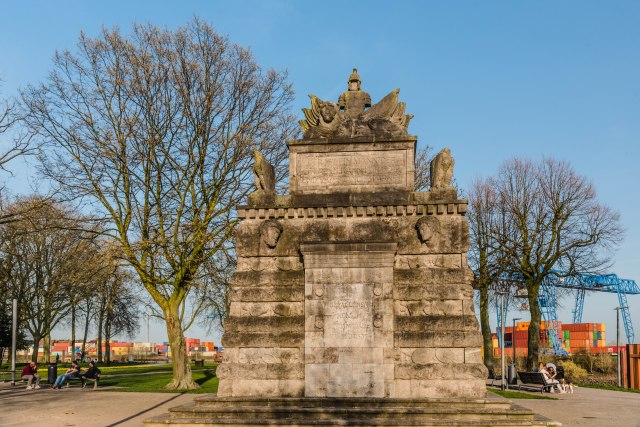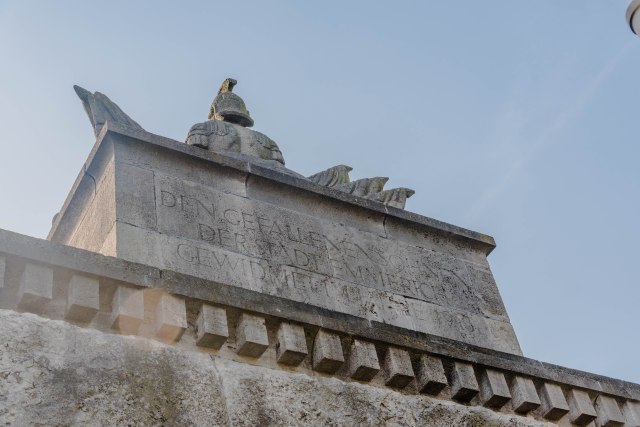The memorial to the fallen of the 1860s Wars of German Unification in the Rheinpark in Emmerich (Kriegerdenkmal, Emmerich). Emmerich is a sleepy little river port on the Rhine, literally within a casual afternoon stroll of the Dutch border.

Completed under Wilhelm Kreis in 1913 on the eve of the First World War and deeply redolent of the ‘dulce et decorum est’ mentality which played such a role in that conflagration.
Upper text: “Der ist ein Mann, der sterben kann für Gott und Vaterland. EM Arndt.” – He is a man, who can die for God and fatherland.
Lower text: “Den gefallenen Helden. Die dankbare Vaterstadt.” The fallen heroes. The grateful hometown.

“Den gefallenen Sohnen der Stadt Emmerich gewidmet im Jahre 1913” – Dedicated to the fallen sons of the city of Emmerich in the year 1913.
Born in 1873, and always a conservative nationalist, making a particular name for himself in constructing memorials to Bismarck, after the First World War, Wilhelm Kreis became a leading reactionary figure in German architecture, opposing the radical developments of the Weimar Republic avant garde.
After the Nazis took power, Kreis the lost presidency of the Federation of German Architects and several large contracts. Because of his previous extensive work for Jewish construction firms, he seemed temporarily to be offside. But soon enough Kreis was taken on by the National Socialists, designing both civil and military buildings before eventually finding favour with Albert Speer, including monumental facilities for the planned Welthauptstadt Germania.
In August 1944, in the final phase of the Second World War, was added by Hitler to the special list of the Gottbegnadeten (gifted by God), the twelve most important visual artists saved from any war effort, even on the home front. Shortly before, he had been appointed by Albert Speer to work for the reconstruction of bomb-damaged cities.
Yet Kreis seems to have avoided any serious process of denazification and continued to receive commissions into his old age, his last major work being the State Central Bank in Dortmund, completed from 1950-2.





